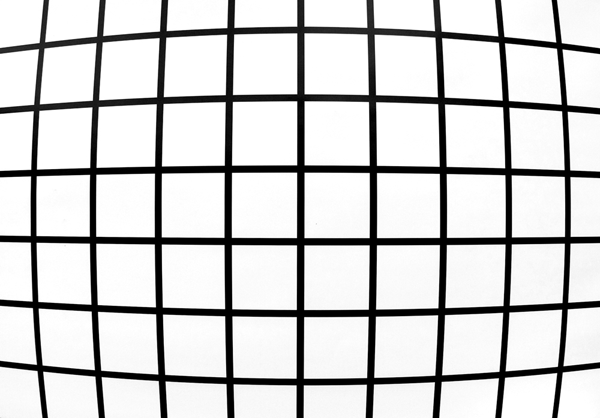|
Canon EF 15mm f/2.8 Fisheye - Review / Test Report - Analysis |
|
Lens Reviews -
Canon EOS (APS-C)
|
|
Page 2 of 3

Distortion
Well, a fisheye is a fisheye is a fisheye. I can´t even provide hard
distortion figures here because the analysing tool didn´t like the fisheye
effect on the grid chart. Anyway, the image below should give you an idea.
Even with the reduced image field of an APS-C DSLR this is no mainstream
lens regarding distortion.

Vignetting
The amount of vignetting was a little tough to measure due to the nature of the lens
so take the chart below as a rough guidance only. At wide-open aperture vignetting
is a little more pronounced but not really an issue anymore at smaller
apertures. So nothing special here anyway.

MTF (resolution & chromatic aberrations)
The lens performed amazingly well in the lab. Regarding the age
and the quite conventional design I had expected a much worse
performance but the center resolution is already excellent straight
from the max. aperture setting (f/2.8). The borders are also quite
usable (in fact very good-) wide-open and improve further
towards medium apertures. Overall very impressive.
Please note that the MTF results are not directly comparable across the different systems!
Below is a simplified summary of the formal findings. The chart shows line widths per picture height (LW/PH) which can be taken as a measure for sharpness.
If you want to know more about the MTF50 figures you may check out the corresponding Imatest Explanations
Unlike with most mainstream ultra-wide lenses chromatic aberrations
are quite well controlled which is surely a result of the simple design.
That said the amount isn't totally negligible at about 0.8 pixels throughout
the aperture range.

Due to it rather extreme depth-of-field a bokeh can only be observed at
very close focus distances. If forced to produce a blurred background it
does a decent job though you may find 5 edge shaped aperture ghostings
which aren't that perfect.
The extreme field-of-view combined with the large front element and
minor lens hood makes the lens quite vulnerable to flare. The situation
is not too bad here but you will experience ghostings as soon as there
a strong light source in the image field. The deterioration of contrast
in such situation still remains within acceptable limits though.
|